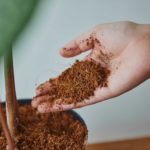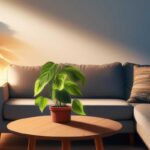Though pests and diseases seem likely culprits, the truth is: Improper watering is the reason why most plants don’t make it. Damage from incorrect watering is common and runs the gamut — from wilting and collapse to drowning. Plants that survive despite watering mishaps often fail to thrive.
Results of Overwatering Houseplants
How plants fare when faced with incorrect watering varies from utter collapse at the first sign of drought to an eventual weak growth pattern if the abuse continues. Generally, thin-leaved plants are quicker to show symptoms of water damage. Thicker-leaved plants, like succulents, can go longer between waterings.When to Water Houseplants
When to water your plants will vary according to a variety of factors. Every home environment is different, and plant watering needs differ by species. There are, however, some guidelines to keep in mind.Know Your Plant’s Watering Requirements
Research your plant and see how much water it needs. Some plants, such as African violets, like to be kept moist, while others, like cactus, prefer drying out between waterings. Most plants like to be watered when they’re just approaching dryness. Pay close attention and you will learn to recognize the signals that each of your plants gives when it needs watering. For instance, many plants “flag” when they’re thirsty, getting a dull sheen to their leaves and wilting slightly.Consider Containers and Soil Mixtures
Smaller containers will dry out more readily than larger ones. Plastic pots stay moist much longer than porous terra cotta. Heavy soil mixes hold more water than light mixes or bark.Check Drainage
It is imperative that water doesn’t accumulate at the bottom of the pot because your plant is likely to drown or develop fungal problems that will lead to root rot. Water should readily flow through the pot.Water According to Plant Needs
Putting your plants on a watering schedule may seem like a good idea, but it’s best if you water only when they actually need it. Always check a plant before watering, even if it is wilting, as droopy leaves are also an indication of overwatering. If the soil is moist, withhold water.Methods for Checking Watering Readiness
- Stick your finger in the soil up to your first knuckle. Water if the soil is dry.
- Use a moisture meter — a pronged instrument you stick in the soil that indicates when a plant needs watering.
- Try the “pick-up” test — a lightweight container often means it’s time to water.





